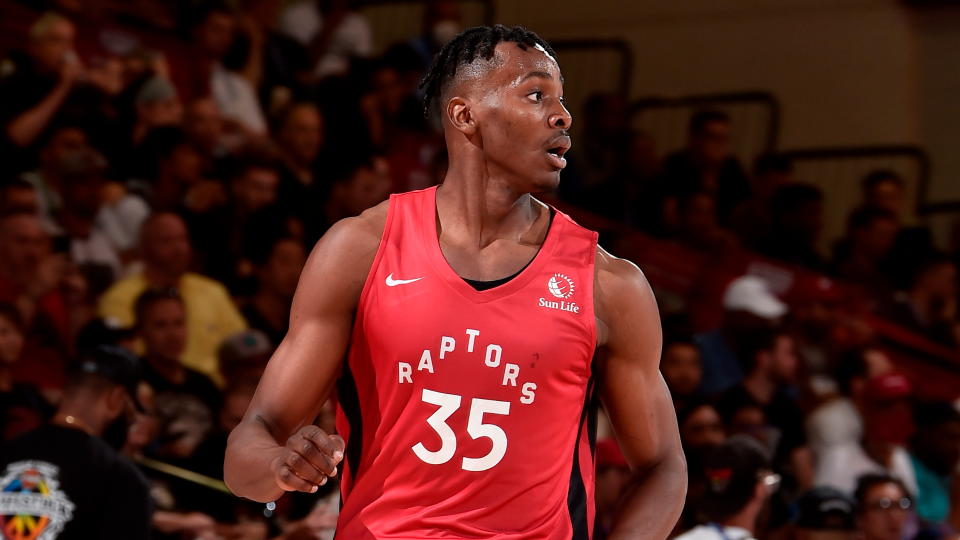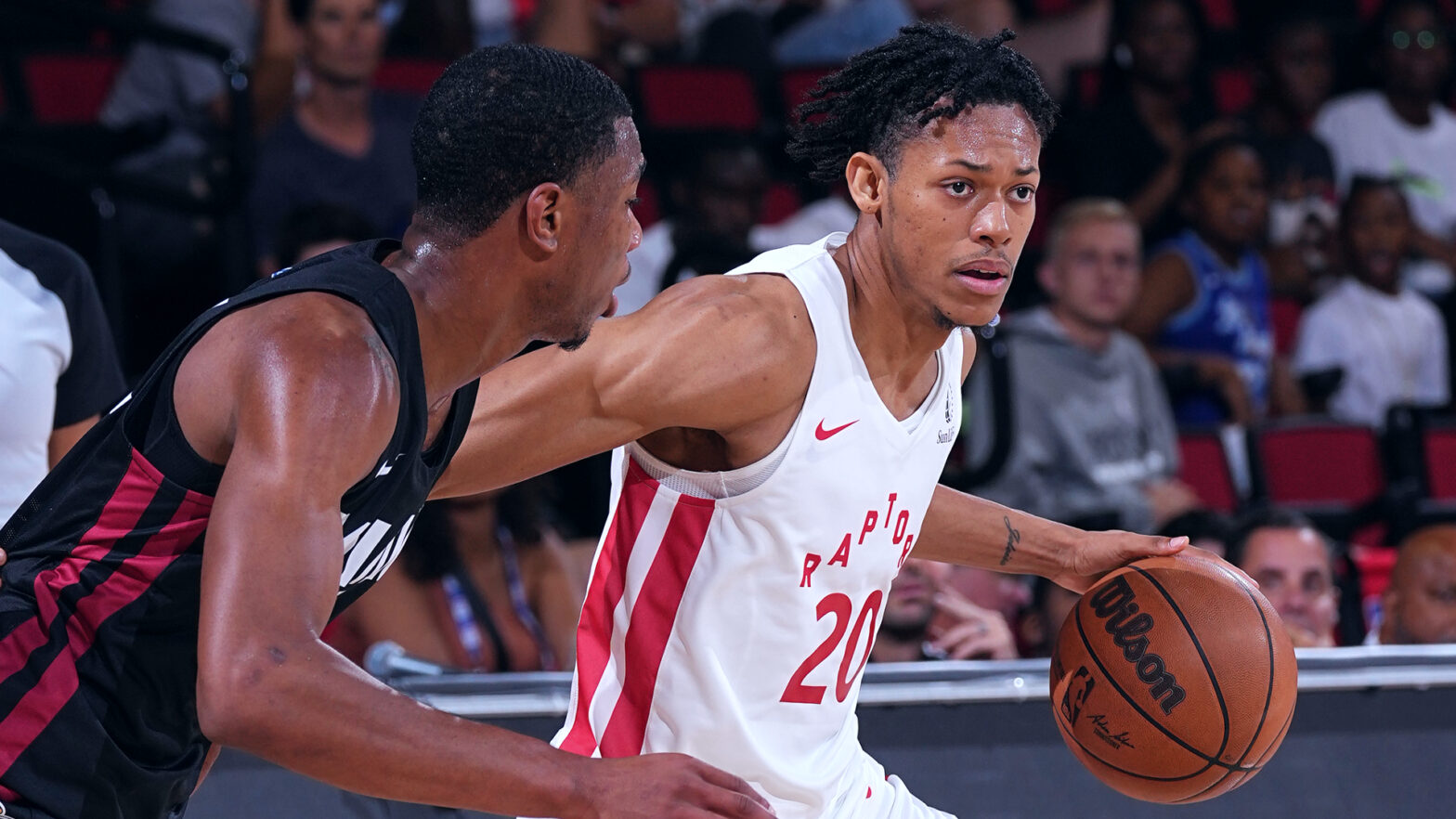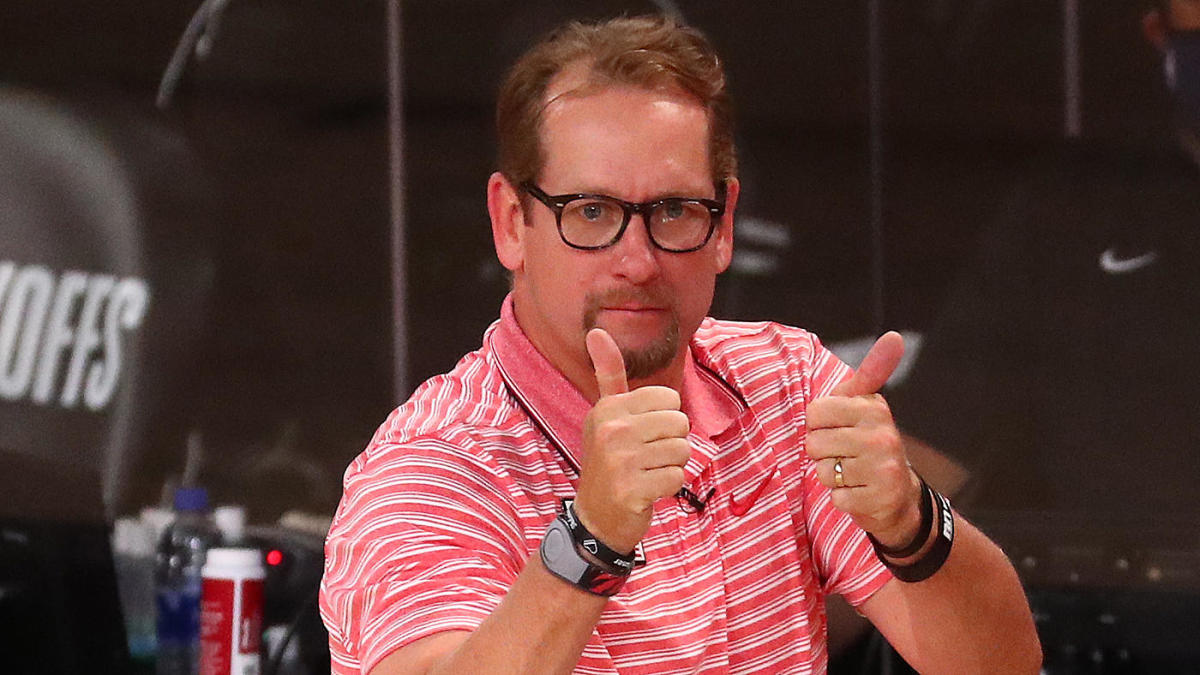The following is a guest post by Brett Huestis.
When Bobby Webster spoke to the press prior to the 2022 NBA Draft, he gave some insight into the type of player the Toronto Raptors would select with the 33rd pick: “Versatile, defensive (minded), if they can make a shot; great.” There may be no better way to describe the current state of Christian Koloko, which he showed at Summer League.
Koloko excels on the defensive end; through five games of Summer League he averaged just under 2 steals per game. With such a nose to make himself long off the ball and force turnovers, his ability to play defense as a center fits perfectly with the Raptors. He’s already shown an ability to use his length to disrupt passing lanes and create turnovers.
For a big, Koloko is impressively mobile. His elite footspeed and 7-foot-5 wingspan are great tools for a rim protector. Koloko averaged just over 2 blocks a game in his time at Summer League (and 2.8 blocks per game in his last year at Arizona). The Raptors have been without a traditional rim-running big for the past few years. Koloko fits that mold. His tools there are incredible, showing great recovery speed and timing, yet not sacrificing his positioning to jump for blocks he can’t reach.
Koloko’s foot speed is the key to his versatility, something the Raptors’ front office values highly. Gone are the days of the slow, rim-jogging big who clogs the paint on offense as much as he protects it on defense. While the Raptors tended to use their traditional bigs (when the team rostered them) in drop coverage, Koloko is mobile enough to switch onto guards and wings on the perimeter.
Alongside his pristine physical tools, Koloko is a frequent communicator on defense. He calls out rotations in the half court and can be seen pointing out who to pick up in transition. For someone who only fully transitioned to basketball at 17, Koloko flashes the tools of what makes a great defender in the NBA, able to string together all his abilities in one package of communication, athleticism, awareness, length, and anticipation.
Koloko will have to develop most on offense in order to contribute at the next level, but even at Summer League he’s shown flashes of what could come down the road. The Raptors implemented him as the roller in some traditional pick-and-roll sets. The spacing was…clunky at times, and the Raptors guards had trouble hitting him when he found an open lane to the rim. The few times that he was able to build up steam and actually receive the ball in open space, his athleticism was on full display.
While he shows promise as a lob threat, his touch around the rim still leaves a lot to be desired. He’s capable of using his length and size to get good looks around the basket, and he has some nifty moves around the basket, including shimmies, hooks, and fadeaways jumpers, but the actual results were iffy when it came to points on the board.
The Raptors make it pretty clear that they want their centers to shoot threes. Koloko shot 2-for-5 from three over five games at Summer League. At Arizona, Koloko shot 5 threes total in 91 games played; the long-distance jumper is a work in progress. It may take some time before he’s reliably hitting deep jumpers or lighting it up from three at the Rising Stars game, but in this area he at least shows a willingness to take the shots, which is crucial to becoming a weapon there. The Raptors have had success in the past with Pascal Siakam, OG Anunoby, and Precious Achiuwa in particular when it comes to developing their jumpshots, and Koloko improved as a free throw shooter every year he played in college; he finished his final year at Arizona shooting 73 percent from the line. It’s no guarantee of future success, but it’s a good sign projecting his ability to shoot going forward. His stroke at least looks repeatable.
When it comes to Koloko and what he could bring to the Raptors next season, it seems more than likely that he could play a role off the bench early. Koloko’s early minutes may be matchup dependent, in particular against teams who employ a more traditional center and against teams who generate a lot of rim pressure. His drop defense will offer Toronto a defensive weapon they mostly lacked last year. Furthermore, the Raptors ranked 17th in blocks per game and were 23rd in defensive rebounding. In these areas, Koloko could make an immediate impact next season. Since Achiuwa has comfortably stretched his range out to the 3-point line, he shouldn’t be considered exclusively a center and could even play alongside Koloko in certain lineups. The Boston Celtics, for example, found great success last year playing two would-be centers alongside one another (Al Horford and Robert Williams III) with only one (Horford) shooting triples. Koloko and Achiuwa should both be firing away from deep.
But if the jumper doesn’t pop immediately — and a few makes at Summer League does not guarantee that it will — Koloko’s ability to contribute offensively will be a struggle early on outside of second-chance touches and lob opportunities. Luckily, the Raptors have enough mouths to feed already on the offensive end, which should allow the coaching staff to develop his offensive game with time. Other Raptors like Achiuwa and even Pascal Siakam earned minutes as rookies because of their defense and were allowed to work through offensive struggles. Even if Koloko doesn’t play with the big club, minutes with the 905 should certainly help him tighten his offensive game as well. Summer League didn’t teach us anything new about Koloko, but it did confirm the truth behind what Webster told the media before the draft. In Koloko, the Raptors found a versatile big who excels on defense, and if he can make a shot, he’ll have no trouble finding minutes in the NBA.



